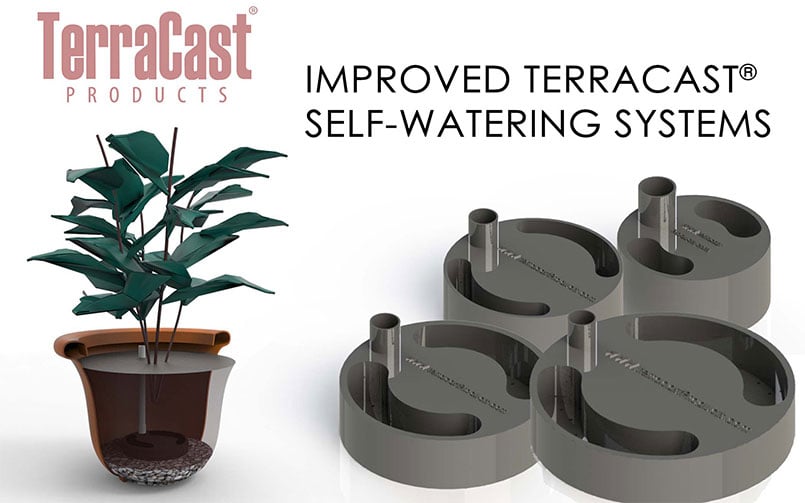Most plants can thrive in a self-watering planter, but some plants do notably better when housed in a self-watering container. There are several key signs that your plants (and you) could benefit from a self-watering planter, such as:
- You often forget to water plants
- You tend to overwater plants
- Have had any issues with root rot
- Plants are kept at a large property that requires a lot of maintenance
- You’re housing plants that are finicky about their environment and don’t do well in soil that is too moist or too dry.
What is a Self Watering Planter?
A self-watering planter can be designed in several different ways, but generally speaking, it is a planter with a separate chamber to store excess water. After you water a plant, the water flows through the layers of soil and ends up at the bottom of the pot – where the roots are. Plant roots are sensitive to mold and rot if left soaking in water. This is why many people drill a hole in the side of planters to let excess water drain out.
The added chamber in a self-watering planter is a better solution to drilling holes in your planters. It serves as a place to store water where the plant can access it as-needed. This not only reduces water waste, but also it decreases the risk a plant will dry out and die due to lack of water.
All self-watering planters have some type of overflow container that fills up with water, but some systems work differently than others. The most basic option includes an overflow container that must be removed when it is full and then physically poured back over the plant. This takes time and effort.
TerraCast self-watering planters defy gravity by pulling water back up into the plant as the soil dries out. That way, even if you forget to water a plant for a couple of weeks, it has a backup supply. This conserves maintenance, reduces water usage, and benefits the health of the plant without any extra thought or effort on your behalf. Learn more
Plants that Prefer Self Watering Containers
Self-watering planters are designed to draw water back up into the soil, therefore, the soil remains moist. This provides healthy conditions for many plants, although, certain plants prefer to live in dry soil and are not the best candidates for self-watering containers. One example is a succulent, which does best in dry soil with very little water. Plants that prefer moist soil are greatly benefited by a self-watering planter, such as…
- Perennials
Perennials are easy to grow, pretty, colorful, and available in many varieties. Some perennials prefer the sun while others do best in the shade, but all varieties prefer mild climates (hardiness zones 3 to 8).
- Tropical plants
Tropical plants are made to thrive in tropical weather which is humid and moist, therefore, tropical plants prefer moist soil.
- Vegetables
Vegetables and self-watering planters are a perfect match. Veggie gardens are often in raised beds, and a container offers the same benefits of this. The key is to find vegetables that will not outgrow the sides of the container.
- Annuals
Many types of annuals exist, with some blooming all the way from late spring to early fall. These flowers are great fillers and come in a range of colors. Annuals prefer moist soil and can even excel in overly damp soil.
4 Benefits of Self Watering Planters
Sure, plants don’t need self-watering planters – you can grow plants in the ground, or in any old pot. Yet, it takes more time and effort on your part to make plants thrive without a self-sufficient planter. Plus, self-watering planters offer a host of benefits, such as:
#1. Soil has better nutrient retention
Due to the closed-system created by a self-watering planter, the nutrients remain in the soil better. As water runs through a plant’s soil, it takes nutritious particles with it. Nutrients are continually lost when water drips out the bottom of the planter. By reusing the same water that has already run through a plant, lost nutrients are replaced.
#2. Protects roots
Root rot is a real problem in the container plant world and self-watering planters offer a viable solution to the issue. By simply preventing roots from soaking in water for prolonged periods of time, you can encourage healthy growth and development of plant roots.
#3. Reduces water usage
Saving water is always a good thing and self-watering planters allow you to do just that. By reusing the water that has already run through the plant, you reduce how much fresh water is required to maintain plants.
#4. Easier to maintain
Since you don’t have to worry about watering your plants all the time, it takes less time to maintain a thriving garden. Even in the peak heat of summer when plants generally require the most water.

